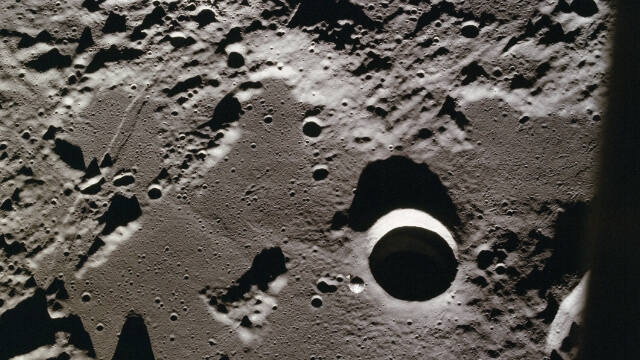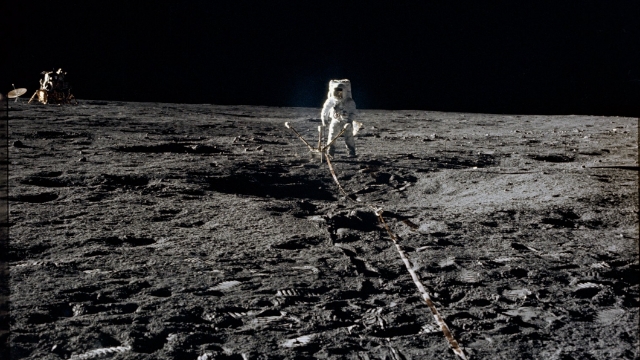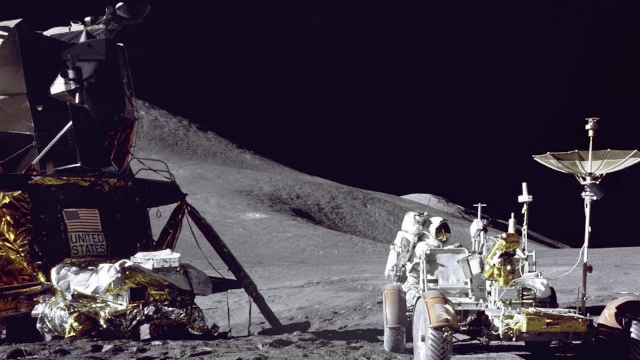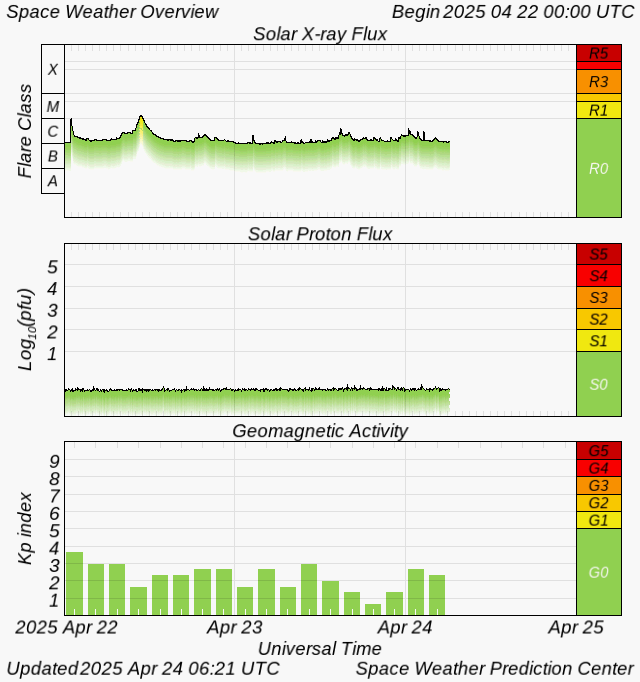U.S. Heritage Lunar Sites & Preserve
The U.S. Heritage Lunar Sites & Preserve will offer a truly unique camping experience in one of the harshest climates in the solar system. Efforts are also underway to establish the 6 (Apollo) lunar landing sites as historic preserves in order to protect and preserve them for future space tourists to enjoy.
Welcome / Introduction (1:00) Moon Camp Area 11 (Decent / Aerial)
Moon Camp Area 11 (Decent / Aerial)
 Moon Camp Area 12 (Alan Bean/ALSEP Cable)
Moon Camp Area 12 (Alan Bean/ALSEP Cable)
 Moon Camp Area 15 (Module & Rover)
Moon Camp Area 15 (Module & Rover)
Fun Fact
Only 12 humans (the crews of Apollo 11, 12, 14, 15, 16 and 17) have ever walked on the moon's surface. No one (person) has been back since 1972.
Overview
 Mare Vaporum (Sea of Vapors)
Mare Vaporum (Sea of Vapors)
The U.S. Heritage Lunar Sites &Preserve will offer a truly unique camping experience in one of the harshest climates in the solar system. Efforts are also underway to establish the 6 (Apollo) lunar landing sites as historic preserves in order to protect and preserve them for future space tourists to enjoy.
The Preserve has 6 planned primitive campsites, with one located near each of the lunar landing sites. In addition, one group campsite will be available in the natural tunnels (lava tubes) located beneath the Marius Hills.
Lunar-campers and space tourists will first arrive at the moon-port located in Mare Vaporum (the Sea of Vapors). Upon arrival, lunar-campers will be transported to the visitor center at Crater Manilius for camper registration and orientation. Visitors can stay a maximum of 120 (Earth) hours on the lunar surface before returning the 384,401 kilometers to Earth. This includes 48 hours at the visitor center and 72 hours at a camping area.
Visitors will also be fitted and assigned an Exploration Extravehicular Mobility Unit (xEMU) suit. The xEMU suit is designed to protect campers from radiation, dust, debris and extreme temperatures during their moonwalks and lunar activities. It includes a pressure garment and life support system that provides oxygen and pressurizes the suit. A two-way radio for communication is also included in a cap under the helmet that contains earphones and microphones. A cooling garment, gloves and boots are also included.
Manilius Visitor Center
When completed, the park's visitor center will be centrally located on the near side of the moon in Crater Manilius, which is on the northeast edge of Mare Vaporum. It is situated within the central peak formation near the midpoint. Most of the visitor center will be constructed within the peak because the moon has very little protective atmosphere or magnetic field. The moon's surface and regolith offer sufficient protection to the visitor center from charged particles of radiation and tiny meteorites.
Short term (24-hour) lodging accommodates are available for all campers upon arrival and prior to departure. The visitor center also offers cafeteria-style eating, a museum, gift shop, observation lounge and restrooms. A small hospital and health clinic are also adjacent to the visitor center.
 Manilius Crater (Location of Visitor Center)
Manilius Crater (Location of Visitor Center)
Campsites & Camping Information
Lunar campsite reservation applications will be available through a lottery (TBD – please check back for lottery dates). Those selected will be required to pass a physical and mental evaluation before a reservation is confirmed. Actual camping dates will be 18 to 24 months in the future. Cancelled reservations will become available (first-come, first-serve) at 7:00 AM (PST) on November 11. Lunar-campers must arrange for their transportation to/from the moon.
Each of the 6 lunar camping areas have one primitive single-family campsite located near each of the 6 Apollo lunar landing sites. Lunar-campers will be tracked within the geofence of each camping area and must maintain a distance of at least 30 meters from the lunar landing site. Up to 4 people are allowed per (single-family) campsite. The Marius Hills (Oceanus Procellarum) group camping area can accommodate up to 12 people.
After a night at the visitor center, lunar-campers will be transported via lunar shuttle from the Manilius Visitor Center to their campsite and Lunar Universal Recreational Biosphere (LURB). Each LURB consists of an inflatable living area that has been covered with regolith bricks bound together by fungi. The LURB is air-tight with an atmospheric environment similar to Earth. Amenities include beds (2 bunk beds) &linens, a chemical toilet, lighting, chairs and a fully-stocked kitchenette. Water and food are also provided. All food is grown in a closed ecosystem and includes mealworms, as well as a variety of vegetables/crops rich in vitamins C1, K and potassium. Some fruits are also available. Water comes from ice in permanently shaded craters and from the polar regions. Please conserve and limit your water use.
Camping Areas
Campsite 11
Mare Tranquillitatis (Sea of Tranquility)
Apollo 11
Lunar Landing Time 4:17:40 p.m. EDT, July 20, 1969
Landing Site Coordinates
0.67408° N Latitude, 23.47297° E Longitude
Camping Area Lunar Coordinates
0°41'04.41" N Latitude, 23°27'39.10" E Longitude
On July 16, 1969 Apollo11 launched on a Saturn V rocket from Cape Canaveral. The crew consisted of Neil Armstrong, Michael Collins and Buzz Aldrin. Four days later (July 20), humans walked on the moon for the first time.
For the first lunar landing, Mare Tranquillitatis was the site chosen because it is a relatively smooth and level area. It is 41.5 km north-northeast of the western promontory of the Kant Plateau, which is the nearest highland region. The area has a high density of craters, as well as fragmental debris ranging in size from fine particles to blocks about 0.8 meter wide.
The Surveyor 5 spacecraft is approximately 25 km north-northwest of the Apollo 11 landing site, and the impact crater formed by Ranger 8 is 69 km northeast of the landing site.
Campsite 12
Oceanus Procellarum (Ocean of Storms)
Apollo 12
Lunar Landing Time 01:54:35 a.m. EST, November 19, 1969
Landing Site Coordinates
3.01239° S Latitude, 23.42157° W Longitude
Camping Area Lunar Coordinates
3°00'53.15” S Latitude, 23°27'17.62” W Longitude
Apollo 12 was the sixth crewed flight in the United States Apollo program and the second to land on the Moon. It was launched on November 14, 1969, from the Kennedy Space Center, Florida, four months after Apollo 11. The Lunar Module, nicknamed Intrepid and flown by Charles "Pete" Conrad and Alan Bean, made a pinpoint landing just 160 meters (520 feet) from the Surveyor 3 probe that had landed two and a half years earlier.
Intrepid landed in the Ocean of Storms at 3 degrees, 11 hours, 51 minutes south, and 23 degrees, 23 minutes, and 7.5 seconds west. Landing was about 120 feet northeast of Head Crater, and about 535 feet northwest from where Surveyor 3 stood in its crater. Apollo 12 touched down approximately 950 miles west of where Apollo 11 had landed.
Campsite 14
Fra Mauro
Apollo 14
Lunar Landing Time 4:18 a.m. EST, February 5, 1971
Landing Site Coordinates
3.64530° S Latitude, 17.47136° W Longitude
Camping Area Lunar Coordinates
3°37'41.50” S Latitude, 17°29'15.45” E Longitude
The landing site is in a broad, shallow valley between radial ridges of the Fra Mauro Formation and approximately 500 kilometers from the edge of the Imbrium Basin. The major crater Copernicus lies 360 kilometers to the north, and bright ray material that emanates from Copernicus Crater covers much of the landing site region. The young and very blocky Cone Crater is in the immediate landing area. The crater is approximately 340 meters in diameter and penetrates the regolith on the ridge to the east of the landing site.
Prior to the abort of Apollo 13, Apollo 14 was targeted to land in the Littrow region of Mare Serenitatis, where the objective was to study young, pyroclastic volcanic deposits. Following the Apollo 13 abort, it was decided to retarget Apollo 14 to the Fra Mauro site, which was regarded as scientifically more important than the Littrow site.
Campsite 15
Hadley-Apenninus
Apollo 15
Lunar Landing Time 6:16 p.m. EDT, July 30, 1971
Landing Site Coordinates
26.13222° N Latitude, 3.63386° E Longitude
Camping Area Lunar Coordinates
26°15'56.73” N Latitude, 3°29'57.85” E Longitude
Apollo 15 was the fourth crewed mission to land on the Moon. The crew consisted of David Scott, Alfred Worden and James Irwin. It was the first of the “J” missions, which allowed for more time on the surface to do science experiments. It was also the first to use the Lunar Roving Vehicle.
Apollo 15's landing site is on the relatively smooth Hadley Delta, a smooth plain of basaltic lava east of Hadley Rille (the sinuous channel-like depression). To the east of Hadley Delta are the lunar Montes Apennines, an arc of rugged massifs that forms the rim of the Imbrium impact basin.
The landing site / camping area is on the eastern edge of Mare Imbrium of the Imbrium Basin. The area includes a dark mare plain call Palus Putredinis (the Marsh of Decay). Aristillus and Autolycus Craters, north of the landing site, have numerous bright rays associated with them, and some of these rays cross the landing site.
The landing site was selected so that, with the aid of the lunar roving vehicle, astronauts Dave Scott and Jim Irwin could examine the Apennine Front at Hadley Delta, the eastern rim of Hadley Rille, and two prominent groups of craters on the mare surface.
Campsite 16
Descartes
Apollo 16
Lunar Landing Time 9:24 p.m. EST, April 20, 1972
Landing Site Coordinates
8.97301° S Latitude, 15.49812° E Longitude
Camping Area Lunar Coordinates
9°06'39.16” S Latitude, 15°36'56.26” E Longitude
Apollo was the fifth crewed mission to land on the Moon and it was also the 2nd “J” mission, with an extended stay on the surface. It also used a Lunar Roving Vehicle to explore and collect science experiments.
The Landing Module (LM) landed in a subdued old crater, approximately 75 meters in diameter. The area is saturated with these old craters so that the few young sharp-rimmed craters provide a notable contrast to the pervasiveness of the old craters.
There are also a few 1 to 2-meter craters nearby with glass-coated bottoms. This glass is cracked and wrinkled so that it looks like dried mud.
Campsite 17
Fra Mauro
Apollo 17
Lunar Landing Time 19:54:57 GMT, December 11, 1972
Landing Site Coordinates
20.1911° N Latitude, 30.7723° E Longitude
Camping Area Lunar Coordinates
20°17'06.40” N Latitude, 30°42'13.30” E Longitude
Apollo 17 was the final mission of NASA's Apollo program with a crew of Commander Eugen Cernan, Lunar Module Pilot Harrison Schmitt, and Command Module Pilot Ronald Evans. The Landing site is in the Taurus-Littrow Valley on the eastern rim of Mare Serenitatis. Several 100-meter-sized craters are in the vicinity.
The valley is bounded on three sides by large mountains that compose a portion of the rim of the Serenitatis Basin; the three most prominent mountains around the landing site are South Massif, North Massif, and East Massif. Closely spaced domical hills, smaller in size than the massifs, compose the northeastern edge of the valley.
A prominent topographic feature on the Taurus-Littrow valley floor is the Lincoln Scarp (which merges with the Lee Scarp near South Massif). The Lincoln Scarp crosses both the valley floor and the surrounding highland material in North Massif.
Marius Hills Group Camping
Camping Area Lunar Coordinates
9°17'12.29” N Latitude, 55°51'43.72” W Longitude
The group camping area is in a sub-moonean cavern accessed by ancient tunnels (lava tubes) beneath the Marius Hills. The area is the largest concentration of volcanic features on the moon and is located in the southwest Oceanus Procellarum and west of Marius crater.
The entrance was originally discovered (imaged) by Japan's Moon-orbiting SELENE spacecraft in 2009.
Subsequent observations by NASA's Lunar Reconnaissance Orbiter (LRO) indicated that the Marius Hills Hole (MHH) extends down nearly 200 meters and is several hundred meters wide. Ground penetrating radar data from SELENE found extensive lava tubes extending down a few kilometers and may actually be large enough to house a small Moon colony.
The group camping area is located about ½ kilometer from the entrance and in a sealed lava tube. The tube offers shelter from the large temperature swings, micro-meteor impacts, and harmful solar radiation on the surface.
Up to 12 campers can stay at the group camping area. Amenities include beds & linens, chemical toilets, lighting, chairs and a fully-stocked kitchenette. Water and food are also provided.
Space Tourism Companies (Future Earth-Moon Transportation)
The following is a partial list of companies providing space travel and/or training. They are not associated with CampsitePhotos.com.
World View (Training / Near Space Tours)
World View Enterprises offers near-space tours via a high-altitude balloon attached to an 8-person stratospheric capsule.
The ship will reach an altitude of approximately 19 miles. Passengers will be able to view the earth and see its curve, but won't be able to experience weightlessness. Flights range from 6 to 12 hours and currently depart from the following locations:
- Amazonia, Brazil
- Aurora Borealis, Norway
- Giza Pyramids, Egypt
- Grand Canyon, USA
- Great Barrier Reef, Australia
- Great Wall of China, Mongolia
- Serengeti, Kenya
Visit Worldview.space for more information and to make a reservation.
Virgin Galactic Spaceport America
Virgin Galactic is “the world's first commercial space line,” and its purpose is to connect people across the globe to the love, wonder and awe created by space travel. The company currently offers a 90-minute journey with the spaceship attached to a mothership. The spaceship is then released at a designated near-space altitude (50,000 feet). Once released the rocket motor will continue at 3.5x the speed of sound toward the stars. After about 1 minute, the rocket will shut down signaling your arrival in space where passengers will experience micro-gravity and spectacular views of the earth and heavens before returning to Earth. Visit VirginGalactic.com for more information and to make a reservation.
SpaceX
SpaceX's Starship spacecraft and Super Heavy Rocket represent a fully reusable transportation system designed to carry both crew and cargo to Earth orbit, the Moon, Mars and beyond. Starship will be the world's most powerful launch vehicle ever developed.
SpaceX offers commercial flights to both Earth and Lunar orbit, with plans to eventually take people to the Lunar surface. Passengers are asked to contact sales@spacex.com to start planning your journey. Visit spacex.com/human-spaceflight for more information.
Blue Origin
Blue Origin is an aerospace manufacturer and sub-orbital spaceflight services company headquartered in Kent, Washington. Its primary launch site is located in West Texas. The company is currently working with other partners to develop “Orbital Reef”, a premier mixed-used space station in low Earth orbit. Opportunities to fly abord the New Shepard into sub-orbit area available. Visit blueorigin.com/new-shepard/reserve-a-seat to make a reservation.
Fun Facts
- Only 12 humans (the crews of Apollo 11, 12, 14, 15, 16 and 17) have ever walked on the moon's surface. No one (person) has been back since 1972.
- The approximate age of the moon is 4.51 billion (Earth) years and it is about 2,159 miles (3,475 km) in diameter (less than a third the width of our home planet).
- One Lunar day is equal to 29.5 Earth days. Daytime on one side of the moon lasts about 13 and a half days, followed by 13 and a half nights of darkness.
- When sunlight hits the moon's surface, the temperature can reach 260 degrees Fahrenheit (127 degrees Celsius). When the sun goes down, temperatures can dip to minus 280 F (minus 173 C).
- The average distance from the Earth to the Moon is 238,855 miles (384,400 km).
- Because the moon's gravity is only one-sixth that of the Earth's gravity, Apollo astronauts had to tread carefully or else risk stumbling or falling. They ultimately perfected a bouncing gait and bunny hops to walk along the lunar surface.
- One of the best places to set up a moon base turns may be the lunar south pole, which has an enormous reserve of water ice and a relatively stable surface temperature around 32 degrees Fahrenheit (0 Celsius).
- Because it lacks an atmosphere, the moon undergoes tremendous daily swings in surface temperature, from a daytime average of 253 degrees F (123 C) to minus 387 F (minus 233 C) at night.
- The Apollo 13 mission was to explore the Fra Mauro formation, or Fra Mauro highlands, named after the 80- kilometer-diameter Fra Mauro crater located within it. It is a widespread, hilly selenological area thought to be composed of ejecta from the impact that formed Mare Imbrium. The next Apollo mission, Apollo 14, eventually made a successful flight to Fra Mauro.
- Objects of any weight fall at the same speed. Astronaut David Scott demonstrated this by dropping a feather and a rock hammer (1000x heavier than the feather) at the same time and each hit the ground simultaneously.
- Alan Shepard hit two golf balls with a six-iron attached to the handle of a soil-sampling tool.
Space Weather
:Product: Weekly Highlights and Forecasts :Issued: 2025 Feb 24 0214 UTC # Prepared by the US Dept. of Commerce, NOAA, Space Weather Prediction Center # Product description and SWPC contact on the Web # https://www.swpc.noaa.gov/content/subscription-services # # Weekly Highlights and Forecasts # Highlights of Solar and Geomagnetic Activity 17 - 23 February 2025 Solar activity was at low levels on 18-20 and 22 Feb, moderate levels on 17 and 21 Feb, and reached high levels on 23 Feb. In total, seven M-class flares (R1-Minor) were observed, ranging from M1.0 to M4.9, and one X-class (R3-Strong) flare. Contributing regions were 3992 (S06, L=246, class/area Eai/090 on 17 Feb), 3998 (S14, L=114, class/area Ekc/290 on 23 Feb), 4000 (N17, L=105, class/area Dai/180 on 22 Feb), and 4001 (N24, L=176, class/area Dai/050 on 23 Feb). The sole X flare was an X2.0 from Region 4001 at 23/1927 UTC. No proton events were observed at geosynchronous orbit. The greater than 2 MeV electron flux at geosynchronous orbit reached high levels on 17-18 Feb due to persistent negative polarity CH influence, and was at normal to moderate levels on 19-23 Feb. Geomagnetic field activity reached G1 (Minor) storm levels on 18-19 Feb, and saw an isolated active period on 20 Feb, due to persistent negative polarity CH influence. Conditions were at quiet to unsettled levels 21-23 Feb as CH effects dissipated. Forecast of Solar and Geomagnetic Activity 24 February - 22 March 2025 Solar activity is expected to range from low to moderate levels throughout the period. R1-R2 (Minor-Moderate) activity is possible at different points throughout the period as active regions grow, evolve, return from the far-side of the Sun. There is a slight chance for R3 or greater events if any of the active regions develop additional complex magnetic structures. There is a slight chance for S1 (Minor) or greater proton events, pending the development and activity of the active regions. The greater than 2 MeV electron flux at geosynchronous orbit is expected to be at normal to moderate levels from 24 Feb-09 Mar and 19-22 Mar. From 10-18 Mar, high levels are likely as recurrent negative polarity coronal holes are expected to move into geoeffective positions. Geomagnetic field activity is expected to be at quiet to unsettled levels on 24 Feb-06 Mar with periodic, weak CH influences. Unsettled to active levels, with isolated G1 (Minor) storming conditions are likely from 07-18 Mar as recurrent negative polarity CHs are expected to be in a geoeffective position. A return to mostly quiet conditions is expected on 19-22 Mar as the CHs move out of a favorable position.
References
- United Nations Moon Agreement (1979) – PDF
- United Nations Outer Space Treaty (1967 / 2002) – PDF
- NASA's Recommendations to Space-Faring Entities (2011) – PDF
- hq.nasa.gov/alsj/a14/images14.html
- images.nasa.gov
- nasa.gov/mission_pages/apollo/40th/a11_audio_db.html
- nasa.gov/mission_pages/apollo/40th/a11_audio_highlights.html
- spacegrant.nmsu.edu/lunarlegacies/artifactlist.html
- iop.org/explore-physics/moon/how-could-we-live-on-the-moon
- nature.com/articles/d41586-018-07107-4
- nasa.gov/feature/spacewalk-spacesuit-basics
- weather.gov/phi/spacewx
- swpc.noaa.gov
- swpc.noaa.gov/communities/space-weather-enthusiasts
- nasa.gov/mission_pages/apollo/revisited/index.html
- unoosa.org
- lroc.asu.edu
- apollo.sese.asu.edu










































































